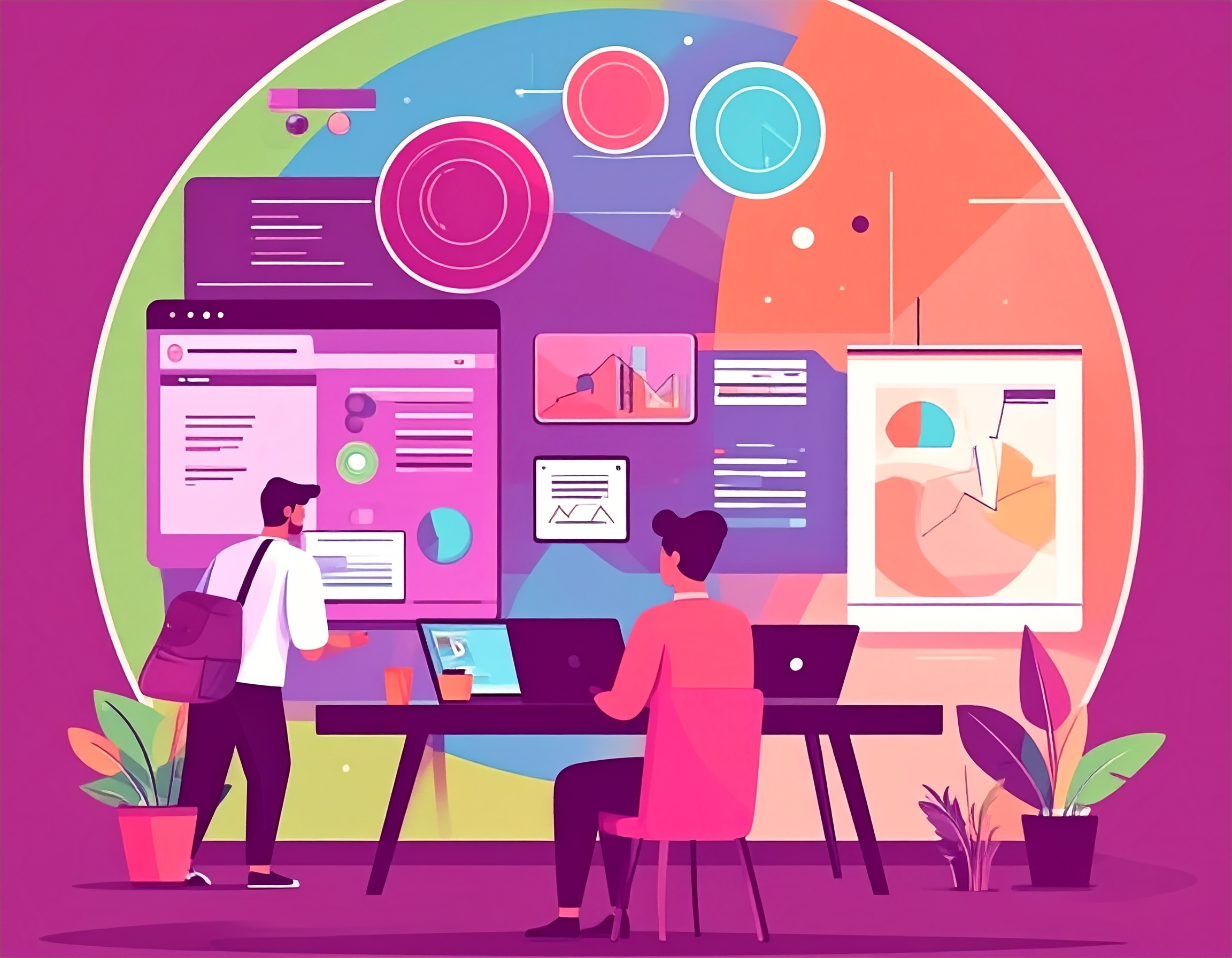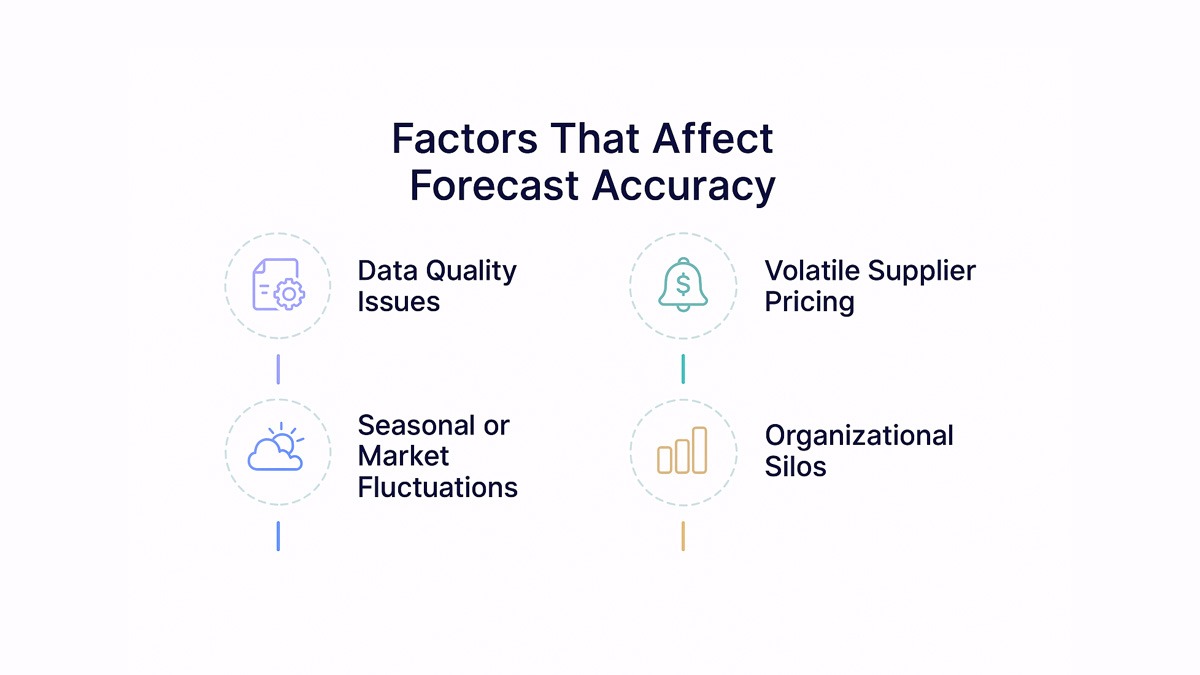

Spend Forecasting Techniques for Procurement: Smarter Strategies to Predict and Save

Spend Forecasting Techniques for Procurement: Smarter Strategies to Predict and Save
Master spend forecasting with proven techniques that cut procurement costs, improve planning, and align vendor strategies.


Every successful procurement strategy starts with foresight - the ability to see where your money will go before it’s even spent. That’s what spend forecasting does. It’s not just about predicting numbers on a spreadsheet; it’s about anticipating needs, mitigating risks, and strengthening supplier partnerships. When done right, spend forecasting transforms procurement from a reactive process into a proactive strategy that saves time, money, and resources.
What this blog covers:
- What is spend forecasting?
- What is demand planning?
- Why spend forecasting matters
- Where should you focus forecasting efforts?
- Top spend forecasting techniques
- Key elements to consider in spend forecasting
- Factors that affect forecast accuracy
- How forecasting helps cut procurement costs
- How Spendflo helps with spend forecasting
- Frequently asked questions on spend forecasting
What is Spend Forecasting?
Spend forecasting is the process of predicting future procurement expenses based on historical data, market trends, and business goals. It helps organizations anticipate costs, plan budgets accurately, and align purchasing decisions with strategic objectives. In short, it gives finance and procurement teams a clear roadmap for smarter, data-driven spending.
What is Demand Planning?
Demand planning involves predicting what goods or services your organization will need - and when - to ensure operations run smoothly without overstocking or shortages. It’s the foundation that spend forecasting builds upon, ensuring procurement aligns with actual business needs and avoids unnecessary costs. Demand forecasting ensures inventory levels match expected needs.
Why Spend Forecasting Matters
Spend forecasting is more than a budgeting exercise; it’s a cornerstone of financial resilience. It helps organizations make confident, data-backed procurement decisions. Here are the key reasons why it matters:

Improves Budget Accuracy
By analyzing historical spend and future demand, forecasting minimizes surprises in procurement budgets. Teams can allocate funds efficiently, ensuring that every dollar is accounted for and used wisely.
Strengthens Supplier Negotiation
Armed with predictive insights, procurement teams can approach suppliers with data to negotiate better contracts, anticipate pricing changes, and secure volume discounts.
Enhances Inventory Management
Forecasting prevents both over-purchasing and stockouts by aligning supply with projected demand. This directly benefits supply chain management by reducing disruptions. This balance keeps operations steady and costs under control.
Supports Long-Term Strategic Planning
Accurate spend forecasts enable leadership to set realistic growth targets, assess financial risks, and make informed investment decisions that align with business goals.
Where Should You Focus Forecasting Efforts?
Forecasting efforts should be strategic - focused on areas where uncertainty or variability poses the greatest risk to cost control. Business intelligence platforms can assist in identifying these high-risk categories. Here’s where procurement teams should start:
High-Value Categories
Prioritize spend forecasting for categories that account for significant portions of your procurement budget, such as software licenses, raw materials, or logistics.
Volatile Markets
Industries affected by fluctuating prices - like energy, metals, or IT services - benefit most from proactive forecasting to anticipate cost swings.
Seasonal or Cyclical Purchases
For businesses that follow seasonal demand patterns, such as retail or manufacturing, forecasting ensures that resources are aligned with expected surges or slowdowns.
Supplier-Dependent Areas
When a few suppliers dominate key categories, forecasting helps prepare for potential disruptions or contract renegotiations. It also strengthens supplier relationships through better planning and transparency.
Top Spend Forecasting Techniques
Forecasting isn’t one-size-fits-all. Machine learning can improve the accuracy of forecasting models over time. Depending on your organization’s size, maturity, and access to data, different approaches may yield better results. Most companies use a blend of quantitative and qualitative techniques to improve accuracy and agility. Spend analytics tools help teams uncover patterns in procurement data. Let’s explore the top methods:
Quantitative Forecasting Methods
These techniques rely on numbers - past spend data, statistical models, and analytics - to predict future spend. They’re ideal when historical data is reliable and trends are relatively stable.
Time Series Analysis
This method identifies patterns in historical spend over time - think seasonality, trends, and cycles. It’s commonly used in recurring spend categories like office supplies or cloud subscriptions.
Moving Averages & Exponential Smoothing
These techniques smooth out data fluctuations to identify long-term trends. They’re simple to implement and useful for forecasting categories with moderate volatility.
Regression Analysis
Regression models examine the relationship between different variables - for instance, how marketing campaigns affect promotional spend. Data analytics helps reveal correlations that inform more precise forecasting. These are more complex but powerful in identifying causal relationships.
Budget-Based Forecasting
Here, forecasting begins with top-down financial planning. Procurement spend is forecasted based on departmental budgets or company-wide financial goals.
Qualitative Forecasting Methods
These are more subjective and rely on the insights and experience of stakeholders. They’re useful when data is limited or in fast-changing markets where past trends may not predict future behavior.
Expert Judgement
Gathering insights from category managers, suppliers, and industry analysts can uncover nuances that numbers miss - like upcoming supplier rate changes or new product launches.
Delphi Method
A structured process where a panel of experts answer a series of questionnaires, refining their responses with each round until a consensus forecast is formed.
Scenario Planning
This technique explores multiple future scenarios (best-case, worst-case, etc.) and builds forecasts around each. It’s especially useful in uncertain or rapidly evolving industries.
Vendor Collaboration
Suppliers often have valuable insights into market trends and upcoming price fluctuations. Joint forecasting with key vendors helps align both parties and improve accuracy.
By combining both quantitative rigor and qualitative intuition, organizations can build robust, flexible forecasts that reflect both the data and the business context.
Key Elements to Consider in Spend Forecasting
Effective spend forecasting doesn’t rely on models alone - it’s about understanding the factors that shape spending behavior. Here are the foundational elements to get right:
Historical Spend Data
Clean, categorized spend history is the bedrock of any forecast. Without it, models can’t detect patterns or
trends. Ensure your procurement data is centralized and well-organized before attempting any forecasting.
Supplier Performance
Supplier reliability, delivery timelines, and price fluctuations all impact spend. Forecasts that account for supplier performance provide more realistic and actionable insights.
Market Trends
Commodity prices, geopolitical factors, currency fluctuations - these external variables can dramatically affect procurement costs. Good forecasting tools tap into market data feeds to stay current.
Internal Business Changes
New product launches, headcount expansion, or mergers and acquisitions can all shift spend patterns. Keeping an open line of communication with business units helps procurement teams adjust forecasts accordingly.
Factors That Affect Forecast Accuracy
Even the most advanced forecasting models can miss the mark if the inputs are flawed or external conditions shift unexpectedly. Understanding what can throw off your spend forecast is key to improving its reliability. Here are the major factors that impact forecast accuracy:

Data Quality Issues
Garbage in, garbage out. Inaccurate or outdated procurement data - like miscategorized expenses, missing invoices, or disconnected systems - can skew your forecasts significantly. Clean, consolidated data is non-negotiable for any meaningful forecast.
Volatile Supplier Pricing
If your vendors operate in markets with unpredictable price swings - say, freight, tech, or commodities - your forecasts will be more sensitive to those fluctuations. Without real-time data or early supplier communication, price volatility can derail your numbers.
Seasonal or Market Fluctuations
External events - holidays, fiscal year-ends, global disruptions - can create demand spikes or slowdowns. If forecasts don’t factor in these seasonal shifts or black swan events, they’ll miss the mark.
Organizational Silos
When finance, procurement, and department heads don’t share information, forecasts lose accuracy. Lack of alignment on budgets, upcoming projects, or contract renewals results in fragmented forecasts that don’t reflect true demand.
Recognizing these roadblocks doesn’t just help you build better forecasts - it pushes your team to strengthen data hygiene, vendor relationships, and internal collaboration.
How Forecasting Helps Cut Procurement Costs
Spend forecasting isn’t just a planning tool - it’s a cost-cutting engine. When you can anticipate what you’ll need, when you’ll need it, and how much it’ll cost, you unlock multiple layers of savings.
Accurate forecasts prevent over-ordering, which ties up capital in unused inventory. They also help maintain healthy cash flow by minimizing unnecessary spend. This reduces the likelihood of unnecessary Purchase Order creation. They also reduce rush purchases, which often come at premium prices due to short lead times. Procurement teams can use forecasts to buy in bulk, negotiate early, or even avoid certain categories altogether if the ROI doesn’t justify the spend. These strategies contribute significantly to long-term cost savings. This approach often reveals hidden cost-saving opportunities.
And then there’s the strategic advantage - when leadership sees clear, credible forecasts, procurement becomes a trusted partner in driving financial discipline and smarter investments.
How Spendflo Helps with Spend Forecasting
Spendflo empowers procurement and finance teams with the tools and visibility they need to build accurate, data-driven forecasts - without the spreadsheet chaos. By centralizing all SaaS and vendor spend data in one place, Spendflo makes it easier to track historical trends, monitor upcoming renewals, and align budgets with real-time procurement activity.
Its built-in analytics engine helps you identify underused tools, flag renewal spikes, and anticipate future costs with precision. And because it’s tied directly to actual usage data and contracts, your forecasts are always grounded in what’s real - not assumptions. Whether you’re building annual budgets or navigating rapid growth, Spendflo keeps your forecasts sharp, responsive, and cost-efficient.
Frequently Asked Questions on Spend Forecasting
What are the most reliable spend forecasting methods?
The most reliable methods combine historical data analysis (like time series or regression models) with insights from experts, suppliers, and market trends. Using both quantitative and qualitative techniques provides a more complete, flexible forecast.
How do you improve forecast accuracy in procurement?
Start with clean, categorized spend data. Integrate real-time supplier pricing, align closely with department heads, and use technology to monitor spend in real time. Also, revisit and refine your forecasts regularly to adjust for changes.
Can spend forecasting be fully automated?
It can be largely automated with the right tools. Platforms like Spendflo help automate data collection, generate spend trend reports, and even alert you to forecast deviations. But human input is still essential, especially when market shifts or internal changes are involved.
Why is historical data important in spend forecasting?
Historical spend data reveals patterns - seasonal spikes, recurring vendor charges, unexpected costs - that inform future projections. Without it, forecasts rely on guesswork instead of evidence.
What role do supplier performance metrics play in spend forecasting?
Supplier performance metrics help procurement professionals evaluate vendor reliability, delivery timelines, and pricing consistency. These insights support more accurate forecasting and proactive vendor risk assessments.
How do procurement systems and automation tools improve forecasting?
Modern procurement systems, often integrated with enterprise resource planning tools, streamline the procurement process and improve data accuracy. Features like RFP automation and spend analysis platforms reduce manual errors and support better supplier pricing trend predictions.
Can cloud-based tools like Amazon Web Services support forecasting models?
Yes, platforms like Amazon Web Services can power advanced forecasting models, including those based on neural network models. These systems offer scalable computing power for complex procurement analytics.










.png)




.png)










.avif)





